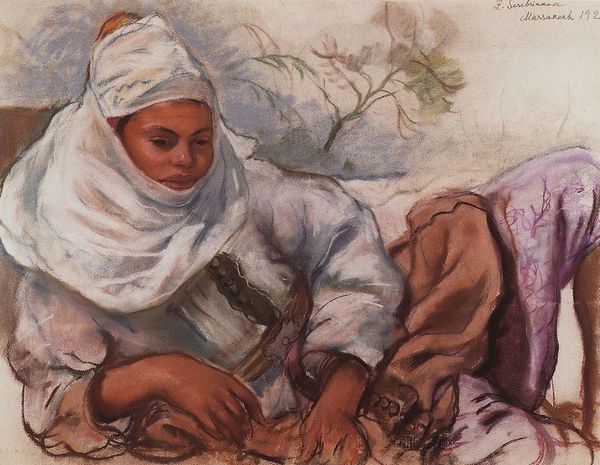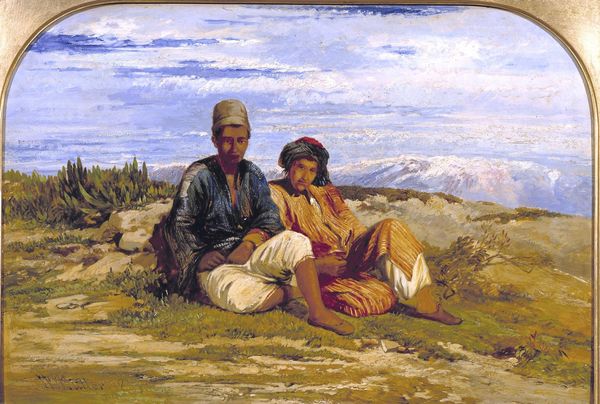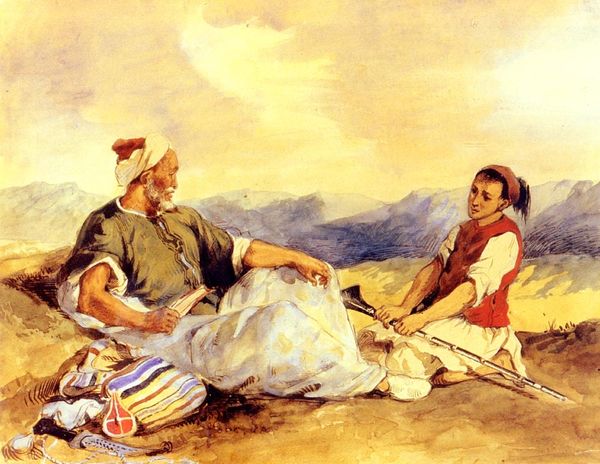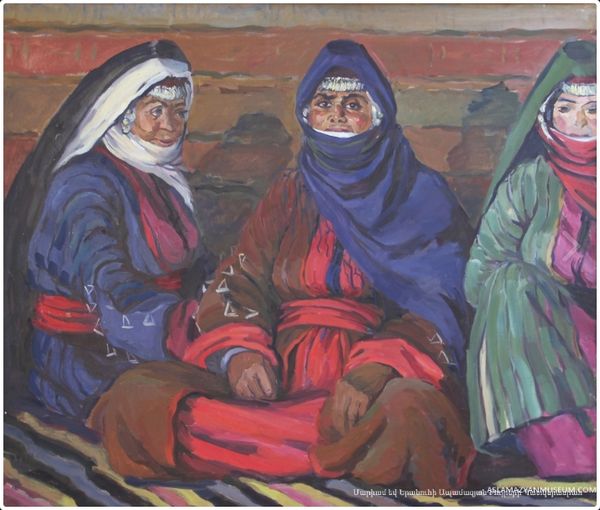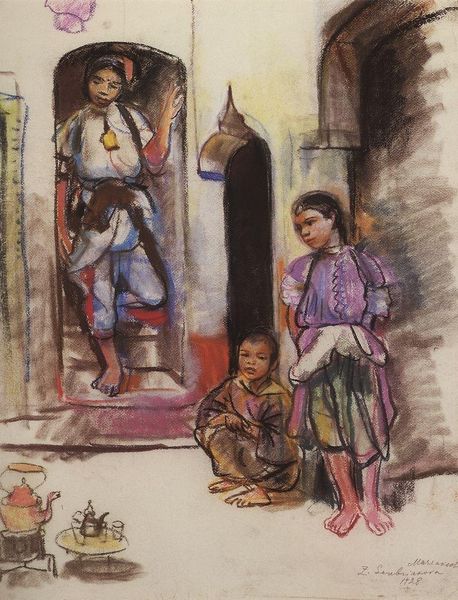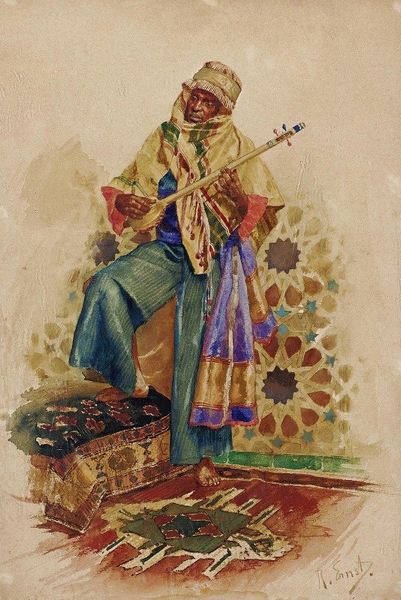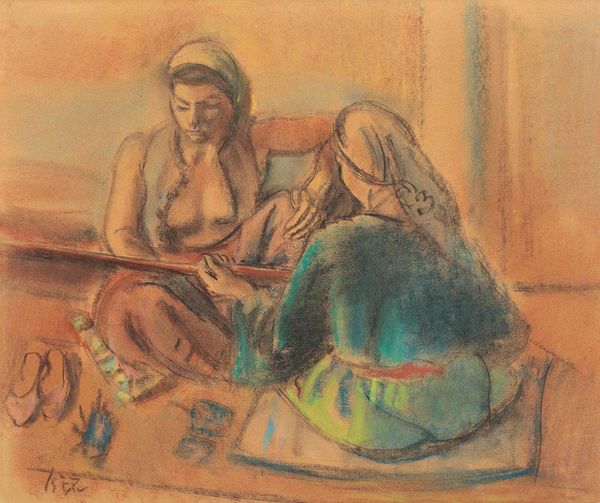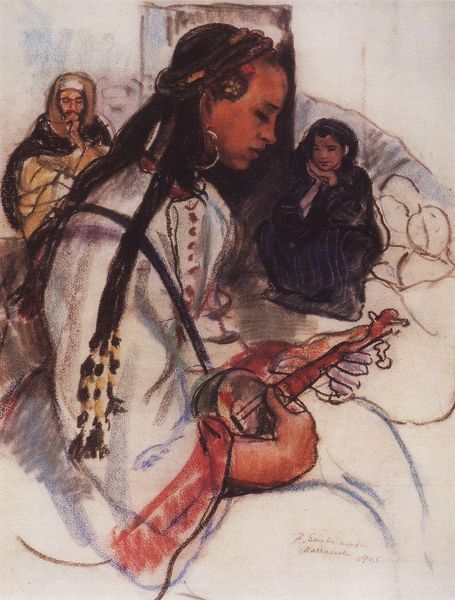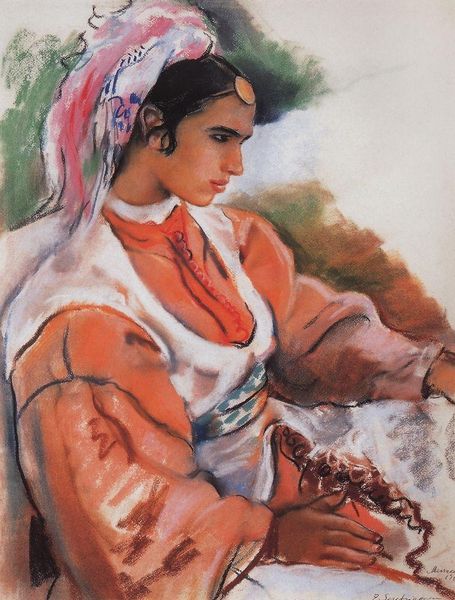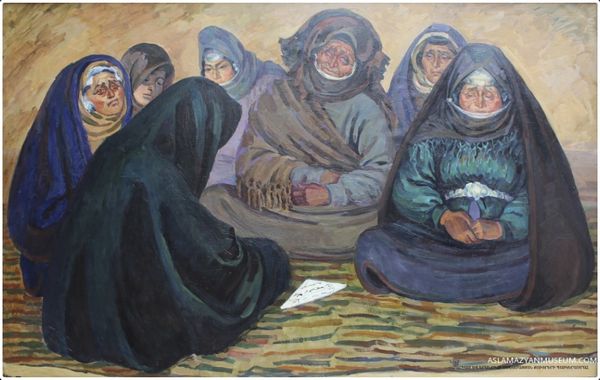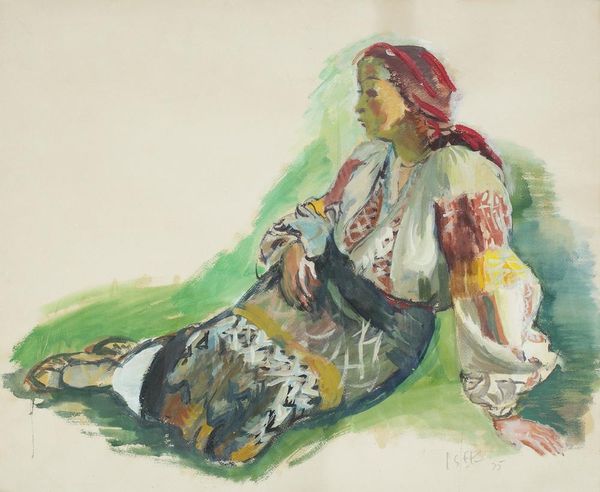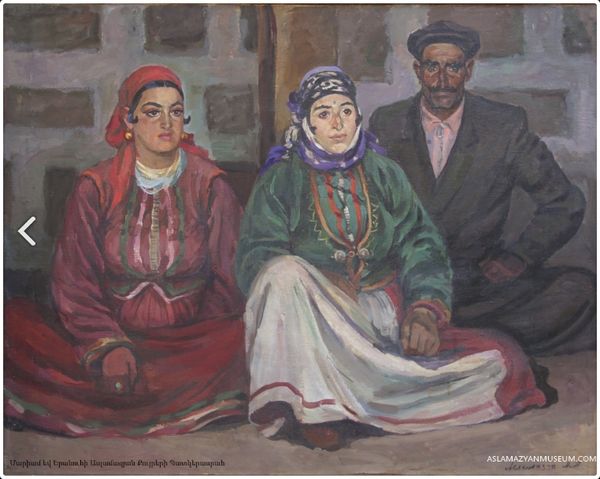
Copyright: Zinaida Serebriakova,Fair Use
Curator: This is Zinaida Serebriakova's "Two Moroccan," a watercolor painted in 1932. The sketch depicts two women sitting side-by-side, seemingly in conversation. Editor: There's an intimacy in their poses, but a detachment in their gazes. It's as if the artist captured a stolen moment, hinting at a deeper story. Curator: Absolutely. The piece definitely plays with some classic Orientalist tropes. We see these women depicted, seemingly captured in the moment, but consider what that actually represents: a potential appropriation or idealization. Editor: Precisely! Though Serebriakova seems to attempt to portray the women with dignity, it’s hard to ignore the power dynamics inherent in these portrayals. The artistic gaze, a European woman looking at Moroccan women, necessarily carries historical and colonial weight. What cultural narratives does it reinforce, consciously or not? Curator: Well, she does a very conscious, albeit probably accidental, use of the triangle – observe the shape formed by the figures and then her positioning of their heads…it leads us in and then locks the gaze. As we look, it returns to the figures again and again and creates, perhaps, this sense of familiarity but from an exterior viewpoint only. It mirrors the gaze as an object. Editor: Good point, and the unfinished quality only amplifies this sense of distance, this unbridgeable gap. As viewers, we are only allowed a glimpse into their lives, mediated by Serebriakova’s perspective, filtered through artistic choices and societal assumptions of that time. I can't help but wonder about their experiences, their voices lost within this artistic representation. Curator: Perhaps. And it raises complex questions. Are we simply perpetuating these imbalances by continuing to display such works? Or do we create necessary dialogues, using the art to discuss our discomfort, to become conscious of its role in shaping how we see the world? It is a piece that is deeply entrenched in how cultures perceived each other in a given moment in history. Editor: A fascinating conundrum that requires a sensitivity to issues of representation and respect, to question whose narrative is really being heard! I'm ultimately left with an overwhelming need to hear the Moroccan women's version.
Comments
No comments
Be the first to comment and join the conversation on the ultimate creative platform.
